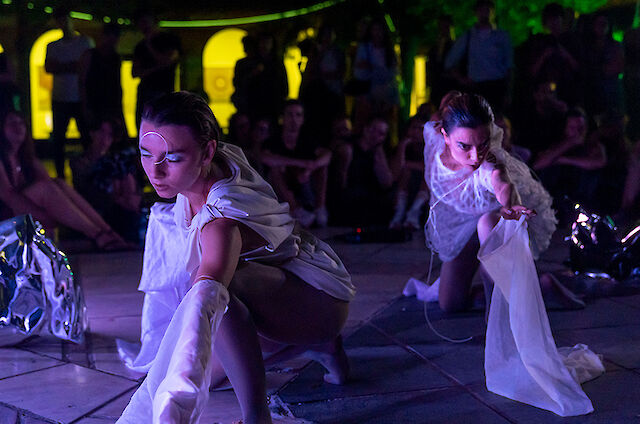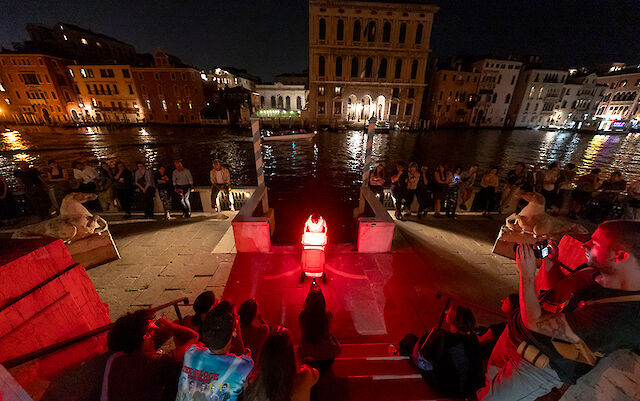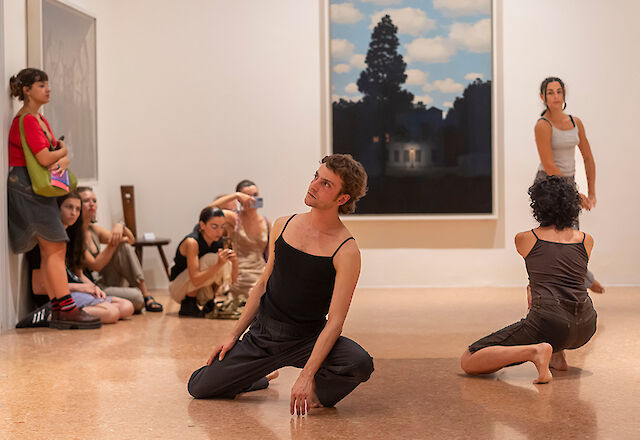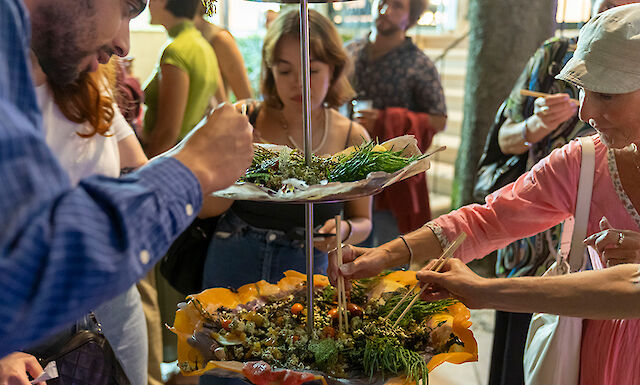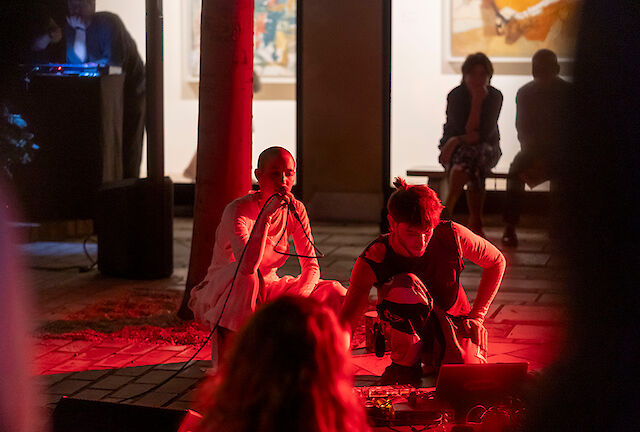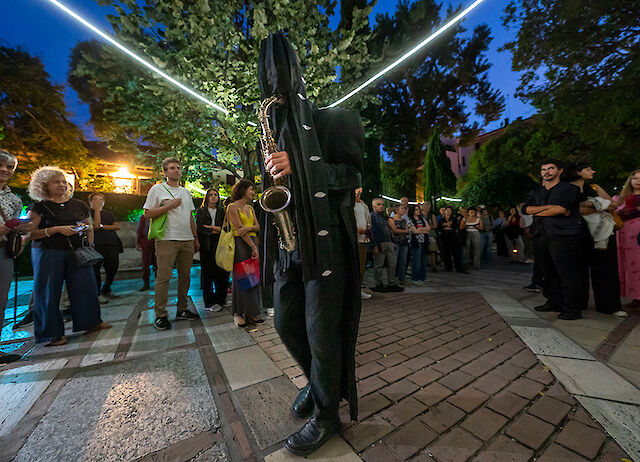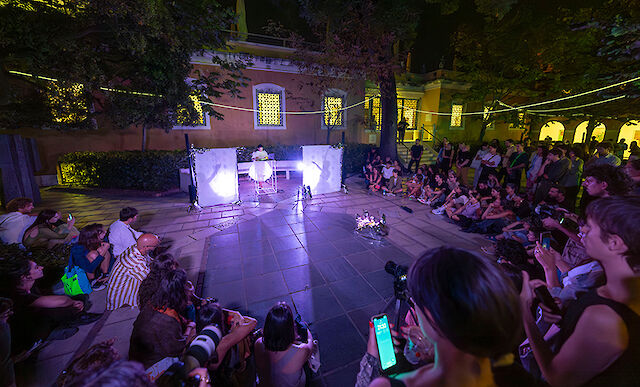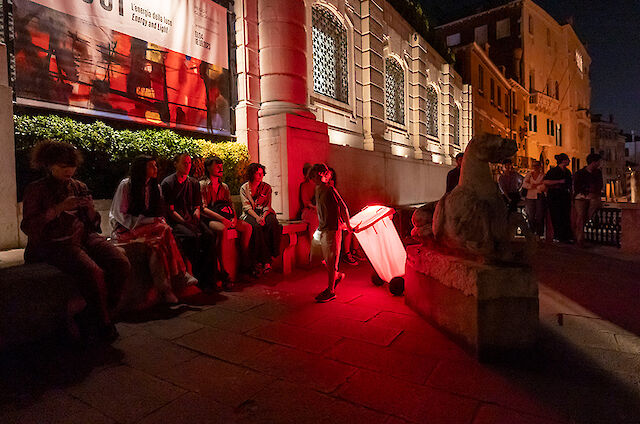avvenimento#1 DETTO MONDO
The final event of the public programs organized alongside the Edmondo Bacci: Energy and Light exhibition saw the museum open its gates to the contemporary Venetian art scene and present Avvenimento #1 DETTO MONDO.
Avvenimento #1 transformed the museum into a transdisciplinary space for different media, from performance to dance, music, and installations. The title of event was inspired by Edmondo Bacci’s works titled Avvenimento. Equivalent to the English word “happening,” an avvenimento is also an unpredictable event that alters reality by redefining the limits of possibility. The subtitle DETTO MONDO (“KNOWN AS MONDO”) is an homage to Bacci, who was affectionately referred to as Mondo by those close to him.
The word Mondo (“world”) also encapsulates the broad spectrum of performative events that took place throughout the evening, conceived by a new generation of artists who took over the museum and experienced it as a place for free expression.
As in the past, when local artists such as Bacci found in Palazzo Venier dei Leoni a place to develop their poetics and carry out their research, today the museum fulfills Peggy Guggenheim’s desire to create “a research laboratory for new ideas . . . serving the future instead of recording the past.”
Various interventions conceived by artists of the Venetian performative art scene took place throughout the evening. The event was curated by Edoardo Lazzari.
The performances
Barena Bianca + Sugar Koka
PERFORMANCE
Serviteur Muet
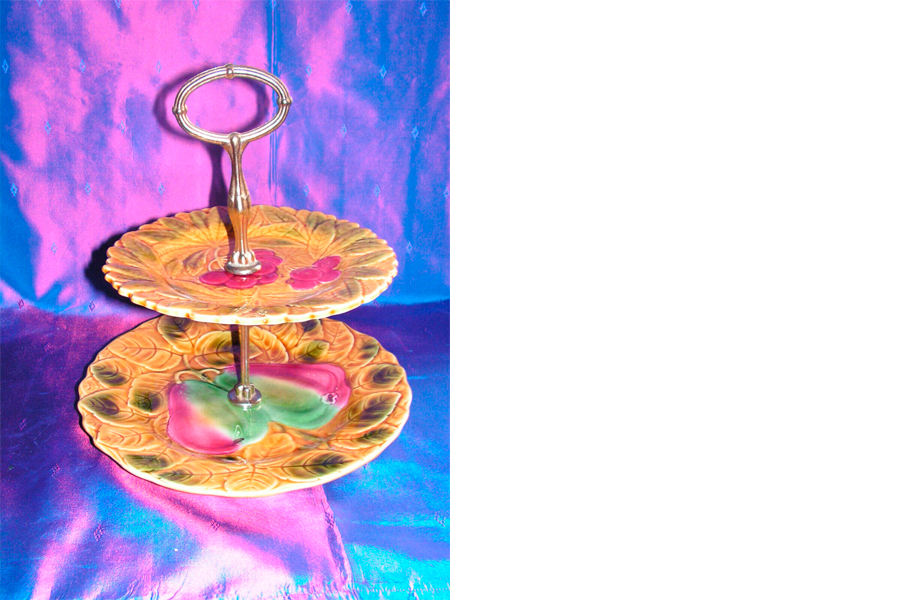
Serviteur Muet is a collaboration between Barena Bianca and Sugar Koka, whose shared interest in culinary art and socio-ecological issues related to the Venetian Lagoon have encouraged experiments with new edible scenarios in the garden of Palazzo Venier dei Leoni. Drawing inspiration from the construction of space through light and color in Edmondo Bacci’s paintings, the artists created an installation constructed with irregular levels made of butter and sugar. Transparent, semi-glasslike surfaces, alternated with bright, rotund shapes merge with the lagoon’s cartography and landscapes. Foams, creams, gummy bears, pearls, and deceptive-looking herbs are the fruits of a sweet and sour shrub, of which soon little to nothing will remain. It melts, breaks, feeds us, and finally disappears.
Barena Bianca, founded in 2018, is an art collective closely tied to the Venice lagoon. Its work stems from the idea that protecting an ecosystem and caring for the people who inhabit it are mutually dependent. The name Barena Bianca and the choice to focus its work on wetlands as fundamental elements of the ecosystem, and at the same time existential metaphors, stems from an awareness of the fact that the erosion of the lagoon and of Venice’s urban fabric are due to closely interconnected causes. In recent years, Barena Bianca has exhibited and presented its projects in Venice and abroad in the form of educational activities, happenings, walks, food, and installations. barenabianca.earth
Sugar Koka is an eco-gastronomic project by artist Manuela Kokanovic (b. 1991), emerging from the affinities between her artistic practice and her passion for cooking and pastry. Kokanovic’s edible sculptures and assemblages create landscapes made of food that are inspired and translate the materiality of pictorial practice and research. Sugar Koka is continually involved in multidisciplinary collaborations, blending influences from her own geographic and cultural background with those of her cooking companions.
Francesco Corsi
PERFORMANCE
Interface
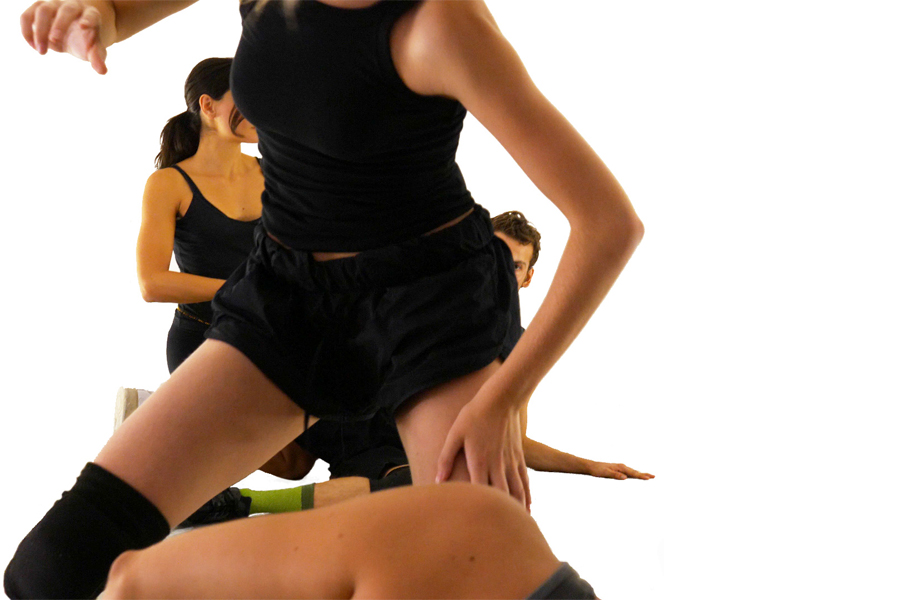
"The interface is not an imaginary line that divides bodies from each other, but rather a material region, a marginal area with its own mass and thickness, characterized by properties that make it radically different from the bodies whose encounter produces it."
Laura Tripaldi, Parallel Minds, 2022
What power do objects have on the body?
Assuming that the body is porous and permeable, four performers inhabit the spaces of the museum for an extended period of time, establishing a non-exploitative relationship with its architecture and works of art. The bodies of the performers materialize the interface—a fragile, liminal space created each time bodies, matter, and materials meet and modify each another. In a game of traces that are pressed into the texture of bodies and are reactivated somatically, the hierarchy between subject and object is subverted: bodies in movement become sculptures and works of art transform into performative bodies.
Concept and choreography: Francesco Corsi
Performance and creation: Bettina Bernardi, Francesco Corsi, Alessandra Grieco, and Bianca Zueneli
Costumes: Francesco Iacovino
Francesco Corsi (b. 1999) is a visual artist and performer based in Venice and Rome. He studied Performing Arts and Choreography at Iuav University of Venice, with an exchange program in Sculpture at the Accademia di Belle Arti di Venezia. He has collaborated with Marco D’Agostin, Traslochi Emotivi, Michele Rizzo, and Pankaj Tiwari, among others, in various national and international venues, such as Base Milano, Centro Pecci, Triennale Teatro, Gessnerallee Zürich (CH), WpZimmer Antwerp (B). In 2022 he was part of Più - Erbacce, a project supported by Cimd (International Centre for Dance and Movement in Milan), sustaining the research of nine emerging artists. In 2023 he was one of the artists of TENT– A School of Performative Practices, a nomadic curatorial project organized by Pankaj Tiwari.
Ginevra Dolcemare
PERFORMANCE
I’ll Be Your Mirror
Ispired by Caterina Serra's latest novel, Bruceremo le città
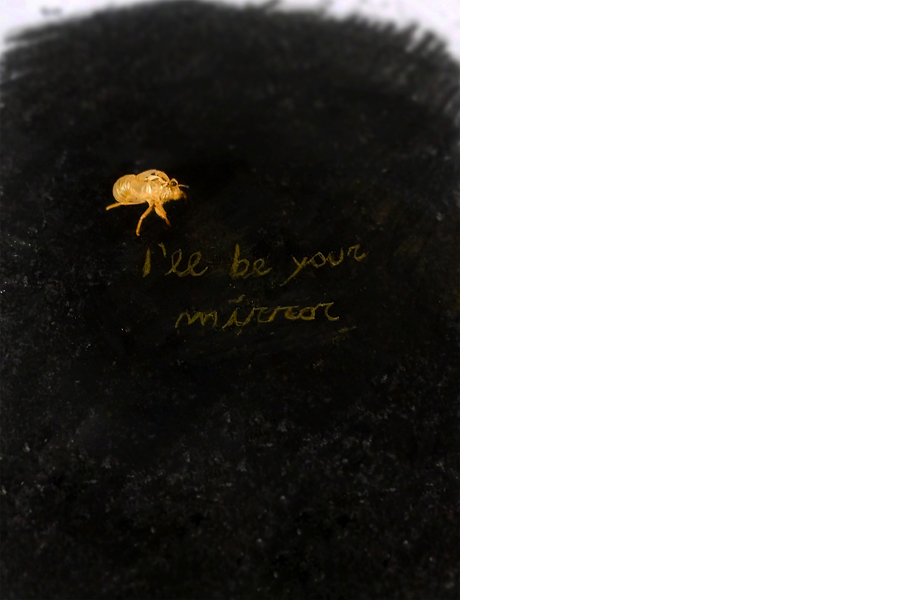
“The ritual begins with the end.”
Discarded postcards hanging midair in the dead of the swamp. They say that the Cricket caught the glimpse of a sickle, as if it were a boat on water. They say that the Black Fox can sense the city by leaning its ear to the wells. They say that the sound of the crickets is the language of lovers. What comes from words of love?
I’ll Be Your Mirror is inspired by Bruceremo le città, Caterina Serra’s latest novel on Venice, illustrated by Giovanni Pagnin, performing here. Amidst visions on the brink of the abyss, the performance, taking place on the terrace overlooking the Grand Canal, moves at the pace of an epistolary correspondence. It questions the hyper-representation of landscapes, and the body takes back center stage as a vector which holds present and past together as a place in the future. A red, untimely horizon emerges: cross-eyed and simultaneous, no one would have guessed it, but some still utter its surfacing.
By Ginevra Dolcemare
Together with Caterina Serra
Starring Giovanni Pagnin
Sound by Giulio Polloniato
Ginevra Dolcemare (b. 1994) is a visual artist, author, and performer who lives and works in Venice and Milan. Her focus is the study of imaginative posture and the observation of what existence guards in relationships. Based on the assumption that every movement is a moral act, her research looks at shifts in the center of gravity between the opposites of contact and distance. Through s site-specific and people-oriented lens, she creates actions capable of projecting dimensions that rupture time and space, while keeping her roots in the matrix of realism. Her creative process aims to distill images and symbols, challenging the saturation that the system continues to proliferate. She has presented her projects at Head Geneva, Spazio Maiocchi, Museo della Permanente, Loom Gallery, 12 Star Gallery London, M9 Museum, and Festival Catalysi. ginevradolcemare.tumblr.com
Jacopo Giacomoni
PERFORMANCE
The Drunken Disruption of a Capuchin Monkey
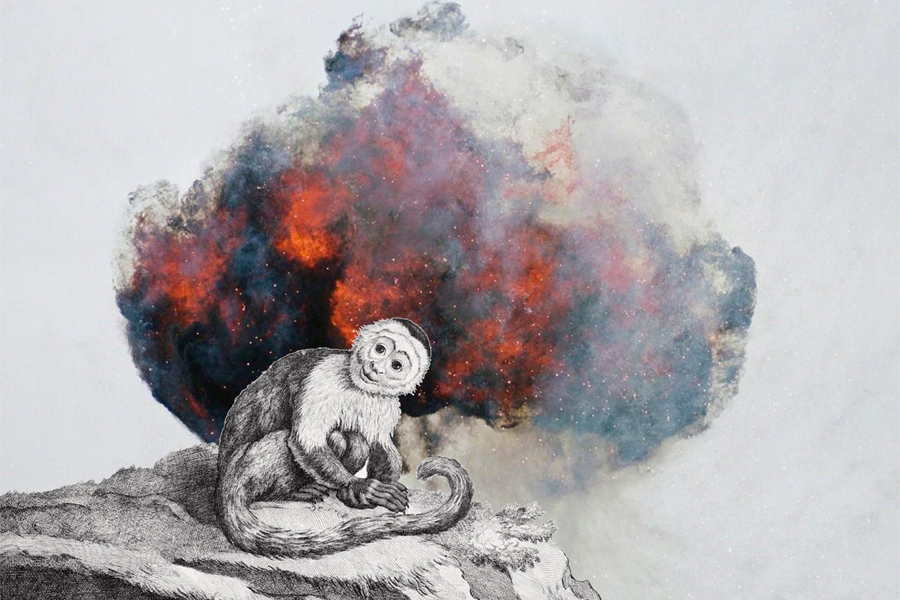 An alto saxophone interrupts the symphony of a near but inscrutable animal world. It harmonizes with the trumpeting of the elephants and the howling of the wolves, it answers the song of the birds and the clicking of the bats, and blends with the braying of a donkey and the buzzing of the bees, only to obliterate them with its own acoustic power. The saxophone subverts the value of a call with pure anarchic exuberance. It screams alone without knowing if anyone will understand it; a brass primate playing in a beastly chorus while carrying the anxiety of loneliness.
An alto saxophone interrupts the symphony of a near but inscrutable animal world. It harmonizes with the trumpeting of the elephants and the howling of the wolves, it answers the song of the birds and the clicking of the bats, and blends with the braying of a donkey and the buzzing of the bees, only to obliterate them with its own acoustic power. The saxophone subverts the value of a call with pure anarchic exuberance. It screams alone without knowing if anyone will understand it; a brass primate playing in a beastly chorus while carrying the anxiety of loneliness.
The performance expresses and explores the physical and linguistic proximity (and distance) of sound; the construction and destruction of a space which oscillates between familiar and alien, domestic and disquieting; the plight and freedom of solitude; and the anger, anarchy, joy, and ineffability of music.
Sound composition and performance: Jacopo Giacomoni
Costume: Ambra Accorsi
Sculpture: Noa Bonino
Sound design: Alessandro Gambato
Jacopo Giacomoni (b. 1987) holds a degree in philosophy, with a thesis on the existence of fictitious characters. He works regularly as a dramaturg and performer for the Malmadur theater company. He carries out structuralist research on dramaturgy, designing spectacular events that encourage public participation and chance, in an attempt to create playful-ritualistic theatrical experiences that upset the time and the gaze of spectators and performers. His latest work includes creating dramaturgical parasites that attack pre-existing textual organisms, a theatrical device that lets spectators elect the greatest human tragedy, a theater office to celebrate a funeral on stage, and a hauntology experiment on the loss of memory of a father suffering from dementia. As a performer, Giacomoni merges his experience as an actor with his background as a saxophonist, continually exploring the realm of free improvisation and non-idiomatic sound.
Gli Impresari + Nicola Di Croce
PERFORMANCE
The Magic Lantern Man
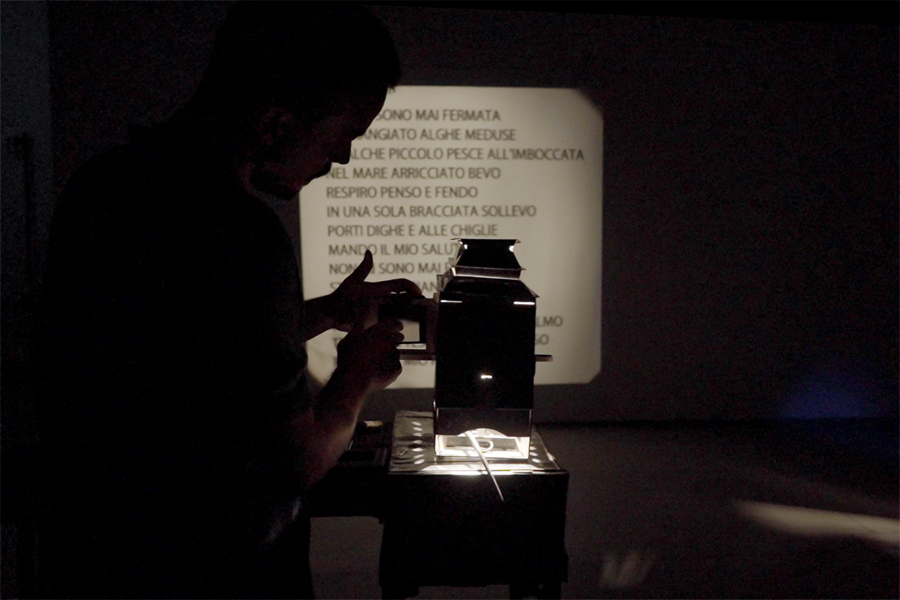 The Magic Lantern Man explores the expressive possibilities of the magic lantern device. The installation consists of a series of lanterns and contributions from over forty artists who were asked to develop a site-specific work based on the iconographic theme of the “triumph of death,” with reference to the one of its most famous representations, The Triumph of Death housed in Palazzo Abatellis in Palermo. This 15th-century fresco reflects the period's notion of human transience, affected by centuries of war, famine, and pestilence. In a general sense, it alludes to death’s indifference to social, racial, and religious differences. The comparison with this work encourages a critical reflection on the current attitude of abolishing death from contemporary culture. In the society of productivism and technological progress, death constitutes an interruption that threatens the continuity of a culture focused on efficiency, in which the individual is the master of their own life and, consequently, of their own future. In contrast with this notion, The Triumph of Death in Palermo expresses a different attitude. When considering that the work is located in a former hospital, it becomes clear that no removal of death occurred in the culture of the time, that it was instead considered a crucial means of defining individuals and society. The project aims to encourage reflection on this topic, by initiating a dialogue with an aesthetic, cultural understanding of the past. This historical comparison relates to the choice of using the magic lantern as a medium, reflecting the will to reactivate a tradition that will otherwise be condemned to museification. At the same time, thanks to its technical and aesthetic peculiarities, the magic lantern stimulates reflection on the current processes that regulate the production of our visual imagery.
The Magic Lantern Man explores the expressive possibilities of the magic lantern device. The installation consists of a series of lanterns and contributions from over forty artists who were asked to develop a site-specific work based on the iconographic theme of the “triumph of death,” with reference to the one of its most famous representations, The Triumph of Death housed in Palazzo Abatellis in Palermo. This 15th-century fresco reflects the period's notion of human transience, affected by centuries of war, famine, and pestilence. In a general sense, it alludes to death’s indifference to social, racial, and religious differences. The comparison with this work encourages a critical reflection on the current attitude of abolishing death from contemporary culture. In the society of productivism and technological progress, death constitutes an interruption that threatens the continuity of a culture focused on efficiency, in which the individual is the master of their own life and, consequently, of their own future. In contrast with this notion, The Triumph of Death in Palermo expresses a different attitude. When considering that the work is located in a former hospital, it becomes clear that no removal of death occurred in the culture of the time, that it was instead considered a crucial means of defining individuals and society. The project aims to encourage reflection on this topic, by initiating a dialogue with an aesthetic, cultural understanding of the past. This historical comparison relates to the choice of using the magic lantern as a medium, reflecting the will to reactivate a tradition that will otherwise be condemned to museification. At the same time, thanks to its technical and aesthetic peculiarities, the magic lantern stimulates reflection on the current processes that regulate the production of our visual imagery.
Performance for three magic lanterns, slides, and sounds.
Works by: Giuseppe Abate, Paola Angelini, Nico Angiuli, Franco Ariaudo, Saverio Bonato, Thomas Braida, Paolo Buggiani, Helen Cammock, Lia Cecchin, Manuele Cerutti, Leone Contini, Teresa Cos, Gruppo Etcetera, Cleo Fariselli, Roberto Fassone, Matteo Fato, Anna Franceschini, Valentina Furian, Martino Genchi, Marco Gobbi, Daniele Alef Grillo, Andrea Grotto, Federico Lupo, Francesco Maluta, Elena Mazzi, Cristiano Menchini, Alessandra Messali, Ryts Monet, Ignazio Mortellaro, Antoni Muntadas, Valerio Nicolai, Cesare Pietroiusti, Thomas Nadal Poletto, Luigi Presicce, Maria Domenica Rapicavoli, Nuvola Ravera, Mariateresa Sartori, Davide Sebastian, Mirko Smerdel, Giulio Squillacciotti, Serena Vestrucci, Luca Vitone, Špela Volcic.
Sonorization: Nicola Di Croce
Performers: Cecilia Bima, Fulvia Larena, and Marta Magini
Gli Impresari (Edoardo Aruta, Marco Di Giuseppe, and Rosario Sorbello) is an artistic collective actively researching those forms of artistic production, resulting from intellectual speculation and technical innovations, which have guided and determined the development of our visual culture since the modern age. The collective’s practice consists mainly of sculptures and installations—often activated by performances—inspired by complex and varied sources, ranging from the marvelous effects obtained through theatrical machines, to the mediatic power of the earliest cinematic projections.
The inevitable link between the political and economic system and the representational modes within society becomes the object and subject matter of a new aesthetic production. By establishing a dialogue with the past the collective attempts to encourage reflections on the concept of technique and spectacularization within contemporary society. gliimpresari.com
Nicola Di Croce (b. 1986) is an architect, musician, sound artist, and researcher. He holds a PhD in Regional Planning and Public Policies from Iuav University of Venice and is currently a Marie Sklodowska-Curie Fellow at Iuav and McGill University, Montreal. His research deals with the relationship between urban studies and sound studies. He is interested in sound-based, qualitative, participatory, and creative approaches to urban policy, analysis, and design. Sound is central to his artistic and academic activities. He considers relational sound art and sound-oriented methodologies as meaningful tools to support the investigation of urban and cultural transformations, as well as way to improve the livability and inclusiveness of public space and promote social change. nicoladicroce.cargo.site
Francesca Heart
PERFORMANCE
The Atmospheres
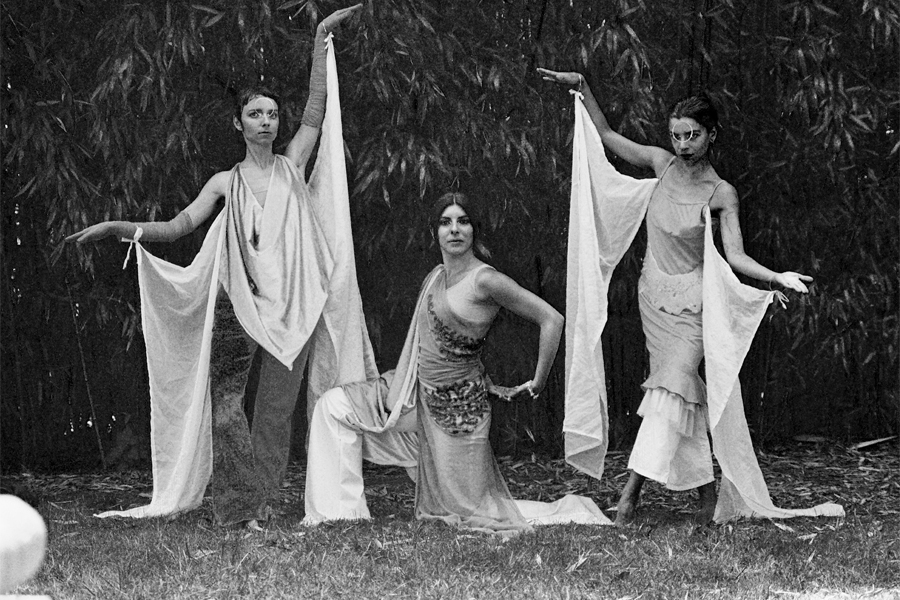 Francesca Heart’s latest adventure in sound invites dancers Claudia Catanzaro and Francesca Petroni to embody the Atmospheres, ambiguous presences whose characters are informed by the visual realm of Eurythmy, a sacred dance practiced in early twentieth-century Europe. The choreography invites the viewer to sit around an imaginary pond where communication takes place through a telepathy of sounds and gestures. Although the surface of the pond evokes a naïve, childlike landscape in which the Atmospheres play and mate, as we dive deeper that same façade discloses a world of mischievous manifestations, secret apparitions, and submerged voices. An acoustic mythology and fantastical land that floats between the whimsical and the numinous, the statuesque and the airy.
Francesca Heart’s latest adventure in sound invites dancers Claudia Catanzaro and Francesca Petroni to embody the Atmospheres, ambiguous presences whose characters are informed by the visual realm of Eurythmy, a sacred dance practiced in early twentieth-century Europe. The choreography invites the viewer to sit around an imaginary pond where communication takes place through a telepathy of sounds and gestures. Although the surface of the pond evokes a naïve, childlike landscape in which the Atmospheres play and mate, as we dive deeper that same façade discloses a world of mischievous manifestations, secret apparitions, and submerged voices. An acoustic mythology and fantastical land that floats between the whimsical and the numinous, the statuesque and the airy.
with Claudia Catanzaro and Francesca Petroni
Chapters:
- The Mating Pond Dance
- Caryatides Gazing through the Mirror of Water
- The Shower
- A New Aquatic Language
Francesca Mariano (b. 1992)—also Francesca Heart, Serpentine Dance—is a dancer and sound artist, and somatic practitioner based in Milan. She trained in postmodern dance and dance movement therapy with Anna Halprin at Tamalpa Institute. Her practice develops through hydro-feminist research, mythological acoustics, and landscape choreology. She is one of the founding members of Nuova Atlantide and is part of the 2023 Shape+ artist roster. Alongside personal projects, she works on musical and choreographic compositions for documentaries, fashion, and film. She has performed and collaborated with various institutions, including the University of California Santa Barbara, Istituto Svizzero, CTM Festival, Rewire Festival, de Young Museum, Nextones, the AA School of Architecture, Leaving Records, and Palermo Living Pavillion. francescamariano.com
Marco-Augusto Basso and Denise Tosato
PERFORMANCE
Death of Master
 Death of Master is a journey through the ubiquitous dimensions of sound, a performance that creates a sonic texture with evocative elements which mutate into an uneven corpus charged with quotations. These musical references are plucked from the realm of industrial technology and the field of landscape recording, with a voyeuristic approach to the sonic world populated by secret narratives. A voice leads the narrative through word-images and vocalisms. Music here acts as a passe-partout leading to a living image, encouraging the listener to engage with treacherous stories that are hard to decipher.
Death of Master is a journey through the ubiquitous dimensions of sound, a performance that creates a sonic texture with evocative elements which mutate into an uneven corpus charged with quotations. These musical references are plucked from the realm of industrial technology and the field of landscape recording, with a voyeuristic approach to the sonic world populated by secret narratives. A voice leads the narrative through word-images and vocalisms. Music here acts as a passe-partout leading to a living image, encouraging the listener to engage with treacherous stories that are hard to decipher.
By and with Marco-Augusto Basso and Denise Tosato.
Marco-Augusto Basso (b. 1995) is an Italian researcher and performer. His interests stem from an analysis of the relationships between the multiplicity and uniqueness of languages. His practice involves devices that compare strategic dimensions of poetic imagery. His collaboration with independent singer Denise Tosato began during a concert dedicated to the founding of the Venetian music label Cosmogram. Since then, Basso and Tosato have researched processes of communication, investigating their performative features.
Cosimo Ferrigolo
light installation
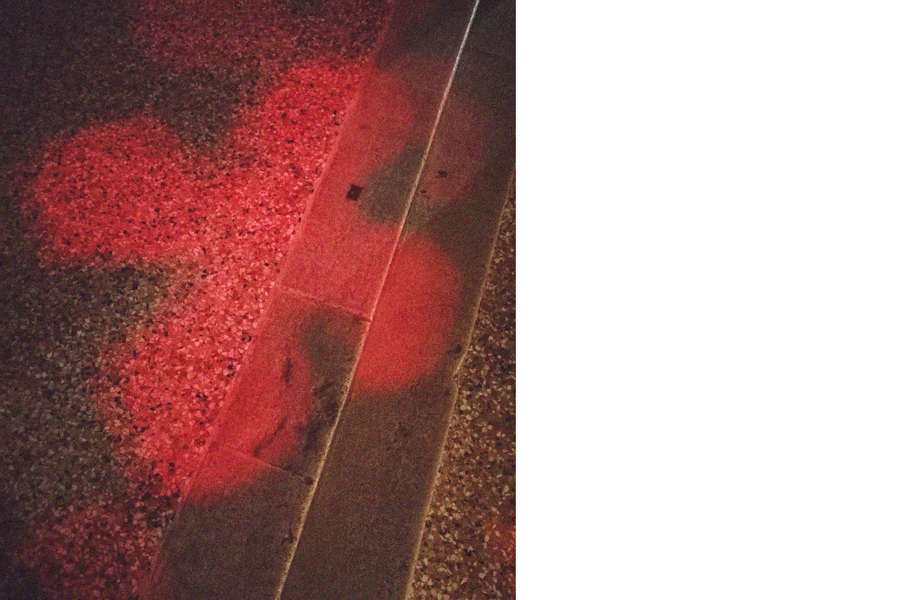 Edmondo Bacci’s paintings depict a primordial age, when matter came into being expressing its existence through continuous explosions, blinding flashes, and gas. The compositional elements are overloaded with energy, and something unimaginable is always on the verge of happening. During the event, the performances interact with an installation that portrays a temporary transfiguration of space through moving light. Various LED lights hidden in the nooks of the courtyard project constantly mutating bubbles in primary colors, similar to those depicted by Bacci.
Edmondo Bacci’s paintings depict a primordial age, when matter came into being expressing its existence through continuous explosions, blinding flashes, and gas. The compositional elements are overloaded with energy, and something unimaginable is always on the verge of happening. During the event, the performances interact with an installation that portrays a temporary transfiguration of space through moving light. Various LED lights hidden in the nooks of the courtyard project constantly mutating bubbles in primary colors, similar to those depicted by Bacci.
A slow flow of ignition and shutdown, of expansions and contractions, animates the space in harmony and discord with the happenings taking place, while a single white light nullifies the confines defined by the walls of the garden and restores a feeling of con-fusion.
Cosimo Ferrigolo (b. 1995) is a researcher, stage manager, and spatial designer. His background merges set design, performance studies, and planning theory. His interdisciplinary approach is developed through collaborative practices. Since 2022 he is a doctoral candidate in Regional Planning and Local Public Policy at Iuav University of Venice. Since 2021 he has been a stage manager for the OHT theater company. In 2020 he co-founded the Bardadino studio and cultural space. Since 2017 he has collaborated with Associazione MetaForte, winner of the Creative Lab III (DGCC/MiC) competition. Ferrigolo currently lives and works in Venice as a guest of the shared studio LAMA FARFALLA 73/B. He has collaborated individually and collectively with Centrale Fies, BASE Milano, TPE, Santarcangelo Festival, Short Theatre, Habibi Kiosk/Münchner Kammerspiele, Pinault Collection, MUDAM Luxembourg.
Edoardo Lazzari (b. 1991) is an independent curator, educator, and doctoral candidate at the Sapienza University of Rome, where his research focuses on curatorial practices as an instituting factor and ecological methodology in the cohabitation between bodies. He has organized public programs and participative and pedagogical projects in institutional (Palazzo Grassi - Punta della Dogana, Peggy Guggenheim Collection, Venice Biennale, and MUDAM Luxembourg) and non-institutional contexts (Biennale Urbana, Catalysi Festival, Venere in Teatro, Fondazione Lac o Le Mon). He recently co-curated the book Performance + curatela (Luca Rosselli Editore, 2021) with Piersandra Di Matteo and curated a translation of Palcoscenici Fantasma. Gisèle Vienne (Nero Editions, 2022). In 2019 he co-founded the Exytagarbo collective, with whom he creates various artistic and curatorial projects related to performative art. In 2020 he co-founded the independent studio and cultural center Bardadino. He regularly collaborates with Iuav University of Venice on the postgraduate course in Theatre and Performative Arts and the Movies – Moving Images Arts master’s degree.
